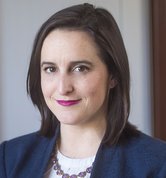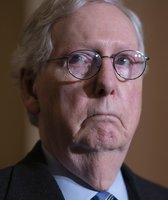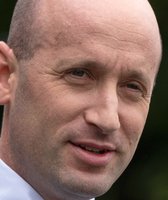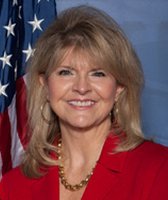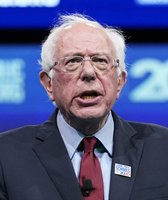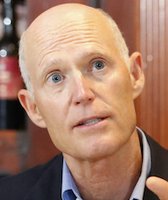Get PolitiFact in your inbox.
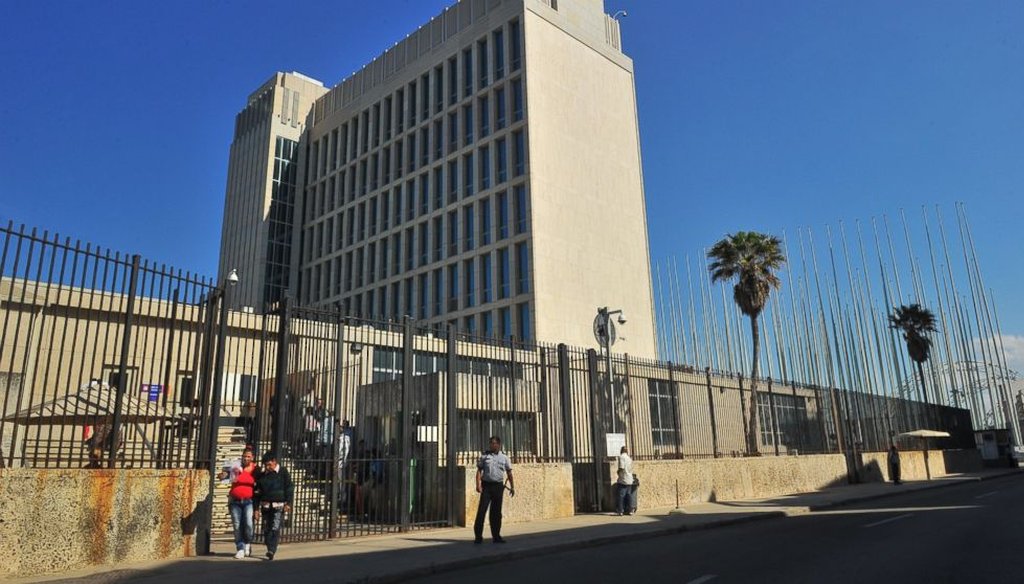
The U.S. Interests Section in Havana, Cuba. (Getty)
Critics of President Barack Obama’s move to normalize relations with Cuba have suggested they will do whatever they can to stand in the plan’s way, from holding up the appointment of an ambassador to denying funding for a new embassy.
But the moves would be more symbolic than anything, Obama’s former Cuba policy adviser Dan Restrepo told CNN.
While the Senate could block the formal confirmation of an ambassador, Obama could tap a career diplomat to lead the embassy without Senate approval. And as for the embassy itself?
"The U.S. has the largest diplomatic presence of any country in Cuba in Havana today," Restrepo told Anderson Cooper on Dec. 17. "The U.S. interests section is the largest diplomatic gathering in the country. It’s housed in the building that was the U.S. embassy before we broke off diplomatic relations. So the notion that you’re going to shut that operation down when really what you’re doing is changing the sign on the door doesn’t really square up with reality."
The idea that the United States already has the largest diplomatic presence in Cuba sounds shocking given our five-decade embargo of the island nation. So we wanted to learn more.
Sign up for PolitiFact texts
Yes, the United States has had a diplomatic post in Cuba for years, and vice versa. Because it’s not an embassy, it gets the funny name Restrepo mentioned, the U.S. Interests Section of Havana, Cuba.
The interests section is housed in the building formerly known as the U.S. embassy, which opened in 1953. The building reopened in 1977 under President Jimmy Carter, and it operates under the auspices of the Swiss embassy.
Restrepo, via a spokesperson for the Center for American Progress, for which he is a senior fellow, provided a May 2014 Department of State inspector general’s report detailing the scope and challenges of the U.S. diplomatic operation in Havana.
The inspector general’s report characterizes the U.S. mission in Cuba as performing well in a "challenging environment" -- one marked by intense surveillance by the Cuban government, unreliable Internet and phone connectivity, delayed shipments of mail and supplies, no consistent banking operation, and not being able to leave Havana without special permission (similar restrictions on travel apply to their Cuban counterparts in Washington).
The employees perform similar tasks as those in official embassies, including processing visa and citizenship applications and helping a growing number of American tourists. The consular facilities also include a building that handles a refugee program for Cubans.
The kinds of open diplomacy programs you see in other countries don’t happen here, though the non-embassy offers some activities, including a computer center offering free, uncensored Internet for 90 minutes at a time to Cubans.
How many Americans are working there? An agreement between the United States and Cuba allows a total of 51 American diplomats.
In addition there are about 400 Cubans who work for the embassy-like operation. More on them in a bit.
Compared to other countries
So the U.S. has a large diplomatic presence, especially considering the icy relationship.
But is it the largest? Experts from the University of Miami, Florida International University, the Center for a Free Cuba and even the former person in charge of the Havana operation say they believe Restrepo is correct.
But they can’t point to specific staffing figures for other countries.
We tried checking with ones we thought might have a bigger-than-normal presence -- Canada, Russia, Venezuela, Spain -- based on their suggestions, but had little to no luck. We failed to find a repository for this kind of information, and experts could not think of where it might exist (aside from the Cuban government, which we failed to reach).
Canada and Cuba have maintained bilateral relations even as the Cold War raged on southward, but their presence in Havana is much smaller.
The Canadian government employs 18 Canadian diplomats and 46 Cubans in its Havana embassy, a spokeswoman said.
We tried reaching various embassies for Russia, Venezuela and Spain for how many diplomatic staffers occupy their embassy ranks, but our inquiries were not returned. Officials for the Cuba Interests Section in Washington could also not be reached.
James Cason, who served as chief of mission at U.S. Interests Section Havana under President George W. Bush from 2002-05, said in a brief phone chat that the U.S. diplomats are "by far the largest" on the island.
What do we know about Russia?
During the height of the Cold War, the Soviet Union established a mighty presence in Havana, erecting an enormous embassy that locals called the "mamotreto," a Cuban word for something "huge and ugly," said Sebastian Arcos, associate director of the Cuban Research Institute at Florida International University.
The building became the Russian embassy after the demise of the USSR (and subsequent pullout of substantial Soviet subsidies), but "things have changed a lot since 1990, and I would not expect the Russian delegation to be significantly large," Arcos said.
A word on local employees
We’ll end with a note on Cuba’s peculiar arrangement for nationals working in the U.S. interests section and foreign embassies.
Like other countries’ embassies in Cuba, the U.S. is required to hire staff through an umbrella employment contract with the Cuban government. Under this arrangement, the U.S. Interests Section pays the Cuban government a fee each month for the contract employees’ services, according to the inspector general’s report.
The Cuban government then keeps a chunk of the money, "ostensibly as the employee’s contribution to the social welfare system," leaving employees with a monthly salary amounting to about $10 a month. The U.S. supplements those salaries based on what local staffers earn at other embassies in Cuba. These employees are treated as contractors.
"Many of the Cubans visit the interests section in Havana. The first person they see is one of these Cuban nationals," said Frank Calzon, executive director of the Center for a Free Cuba. "They know who is coming and going."
The facility and staffing are inadequate for how much work there is to do, the inspector general’s report says, and the building is in need of constant maintenance due to high winds and salty air that slap it every day. The U.S. Interests Section had requested the State Department to approve a $9 million office remodeling plan, but the State Department did not get back to us on where that was going.
In conclusion
Restrepo said, "The U.S. has the largest diplomatic presence of any country in Cuba in Havana today."
This is something that has been brought up a few times in the debate about Obama’s announcement.
By accounts of experts of Cuba in the U.S., it rings accurate, including from the former chief of mission at the U.S. interests section.
But we need to see some more information before we can put Restrepo’s claim on the Truth-O-Meter, particularly details about the size of the embassies for Russia, Venezuela and Spain.
If more information becomes available, we’ll reconsider Restrepo’s claim.
Our Sources
Interview with Frank Calzon, Center for a Free Cuba executive director, Dec. 18, 2014
Interview with James Cason, Coral Gables mayor and former chief of mission at U.S. Interests Section Havana, Dec. 18, 2014
Interview with Sebastian Arcos, associate director of the Cuban Research Institute at Florida International University, Dec. 18, 2014
Interview with Tanya Arditi, Center for American Progress spokesperson, Dec. 18, 2014
Interview with Jose Azel, senior scholar at Institute for Cuban and Cuban-American Studies at the University of Miami, Dec. 19, 2014
Email interview with Caitlin Workman, Canadian Department of Foreign Affairs and International Trade, Dec. 18-19, 2014
Department of State and Broadcasting Board of Governors’ Office of Inspector General, Inspection of U.S. Interests Section Havana, Cuba, May 2014
Congressional Research Service, "Cuba: U.S. policy and issues for the 113th Congress," July 31, 2014
CNN, "In Havana, turning off a sign critical of Cuban government," July 27, 2009
